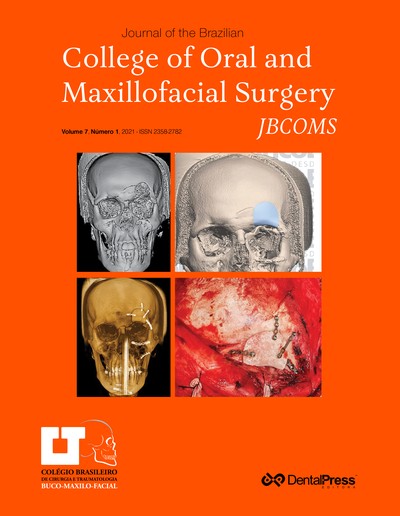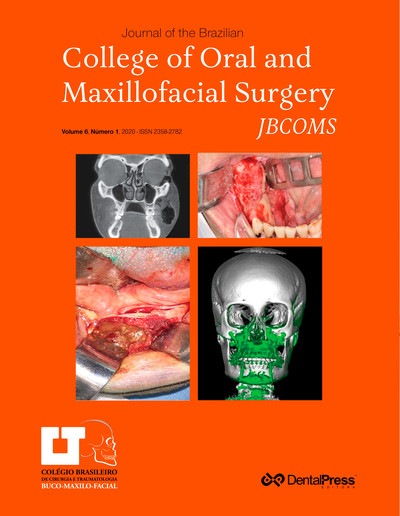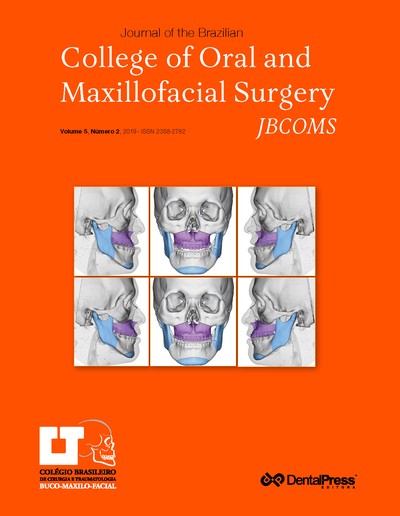
Benign myoepithelioma of salivary gland in palate: case report
Rafael Saraiva Torres, Joel Motta Junior, Marcelo Vinicius De Oliveira, Valber Barbosa Martins e Gustavo Cavalcanti De Albuquerque.
Myoepithelioma are rare tumors that represent at least 1% of salivary gland tumors. The majority is benign and the parotid gland is the most common site of the tumor, followed by the palate and submandibular gland. There is no predominance between the gender and the average age is 62 years old. It appears as a mass of slow growth, generally encapsulated, painless, which leads to a delay in diagnosis. Its malignant variant, even rarer, is characterized by invasion and local destruction, metastasis is rare. The aim of this work is report a case of benign myo epithelioma on the palate, in a female patient, presenting a 15-day increase in volume in the posterior region of the palate, approximately 2.5 cm in the larger diameter, sessile, painless, consistency resilient to palpation, present- ing unchanged lining mucosa, which first diagnose was pleomorphic adenoma. An excisional biopsy of the lesion was performed, presenting a trans-surgical appearance of multiple blisters. Results: Histopathological analysis reached the diagnosis of benign myoepithelioma and no recurrence was observed after 2 years of removal of the lesion. The benign myoepithelioma is a rare tumor that if treated correctly, through surgical excision, presents minimal recurrence.
Keywords: Myoepithelioma. Palate. Salivary gland neoplasms.
How to cite: Torres RS, Motta Junior J, Oliveira MV, Martins VB, Albuquerque GC. Benign myoepithelioma of salivary gland in palate: case report. J Braz Coll Oral Maxillofac Surg. 2019 Sept-Dec;5(3):51-5.
Sunday, April 28, 2024 23:01










